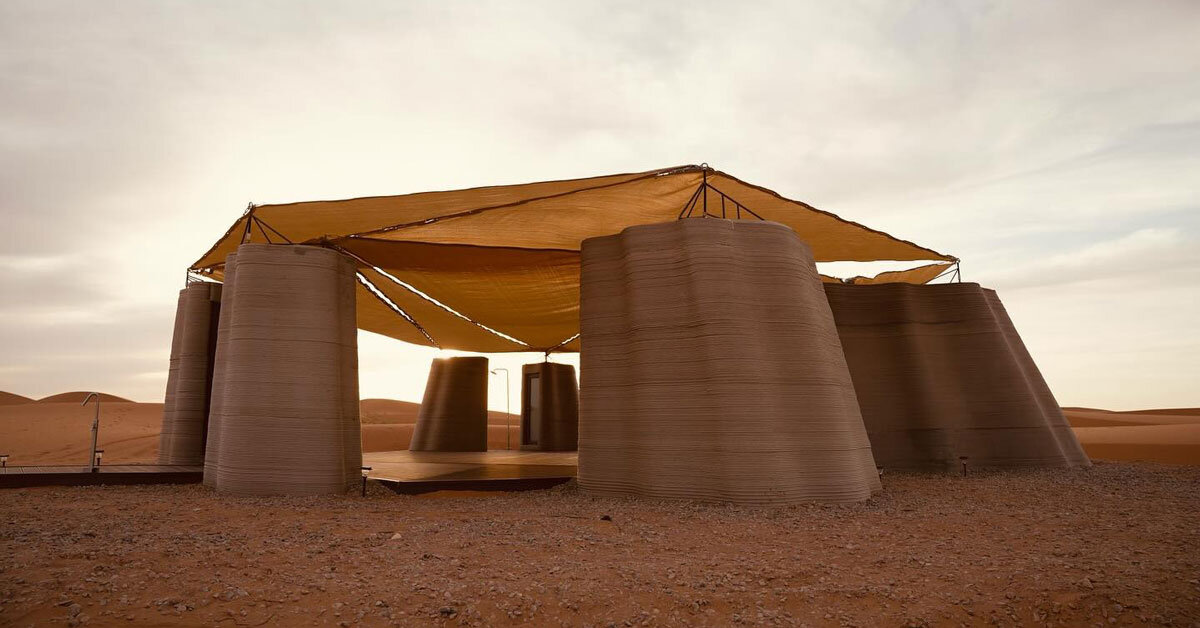
"The campsite comprises nine modular units that together form a self-contained, 150-sqm facility. Each module accommodates a specific function, living area, kitchen, restrooms, shower, and storage, organized around a central wooden deck that acts as a communal and circulation space. The arrangement forms an enclosed cluster called the Desert Ark, designed to provide shelter from high winds and sandstorms while maintaining a visual and physical openness to the landscape."
"The design and construction process were structured in six phases. Prefabricated concrete units were produced using Robotic 3D Concrete Printing (R3DCP) technology in Wuxi before being transported by truck to the desert. On-site assembly was carried out with the assistance of local herders. The foundation was prepared using reusable cargo pallets to minimize ground disturbance, followed by the installation of a - composite deck and retractable canopy for shading. Finally, low-emissivity glazing, solar panels, and water systems were integrated to ensure full off-grid functionality."
Desert Ark is a modular camp on the edge of the Tengger Desert to support reforestation volunteers and test adaptable construction. The camp comprises nine prefabricated concrete modules forming a 150-sqm facility with living and service spaces organized around a central wooden deck. The cluster shelters occupants from high winds and sandstorms while maintaining openness to the landscape. Robotic 3D Concrete Printing (R3DCP) produced modules in Wuxi, which were trucked and assembled on-site with local herders using reusable cargo pallets to minimize ground disturbance. The build integrates low-emissivity glazing, solar panels, and water systems for off-grid operation; modules were assembled within two days.
Read at designboom | architecture & design magazine
Unable to calculate read time
Collection
[
|
...
]